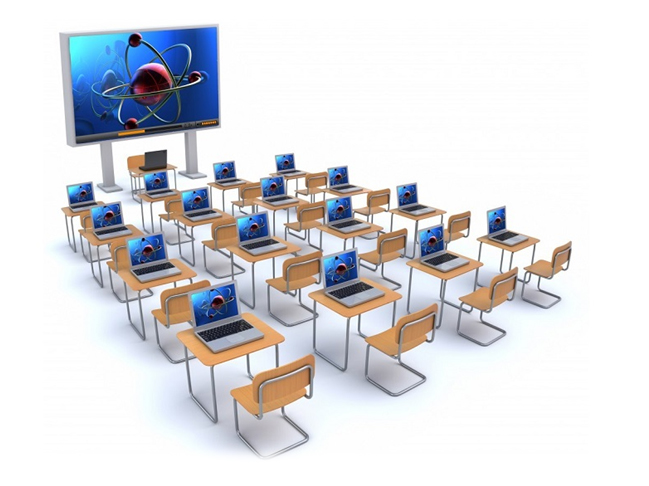
A Smart Class is an upgraded classroom that cultivate education by opening doors to digital teaching and learning methods for both the teachers and the students by coordinating latest advancements in technology with academics. The objectives of such classrooms are to invoke interest in education among the student by introducing them to real-time e-learning with help of audios and videos, multimedia, images, online web conferences, PPT presentations, 2D & 3D animations, etc.
Smart class technology ensures the education reaches every student with different level of understanding equally. Moreover, implementing this kind of classroom education enhances student-teacher interaction and collaboration. A digital board is the most common example of smart equipment usually implemented in educational institutions, especially in schools, to teach with videos, presentations, etc. It acts as a large white tablet replacing the traditional backboard with a touch screen and the chalk with a smart pen, which educators use to write on the white board.
Unlike Virtual classroom, smart classes tend to concentrate more on in-classroom teaching and learning techniques. Additionally, coordinating this education technology with the internet provide students the opportunities of web-based online learning with computers and smart gadgets as well as sophisticate the instructors with innovative teaching tools to teach virtually with interactive programs.

Defining digital education, plus Cambridge International School Dhule’s strategy and vision in this area.
Digital education is the innovative use of digital tools and technologies during teaching and learning, and is often referred to as Technology Enhanced Learning (TEL) or e-Learning. Exploring the use of digital technologies gives educators the opportunity to design engaging learning opportunities in the courses they teach, and these can take the form of blended or fully online courses and programmes.
